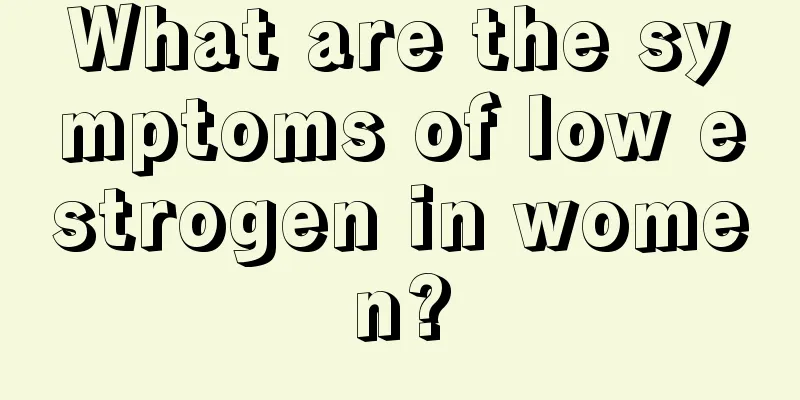Do you know the difference between vertigo and dizziness?

|
Vertigo and dizziness are both common symptoms in life. Because they are only one word different and have similar symptoms, many people confuse them. However, although both are manifestations of disease, they are different. 1. The feeling of dizziness and vertigo is different 1. Dizziness It is mainly characterized by paroxysmal sensation (motion hallucination), which does not exist objectively but is subjectively believed to be a feeling of oneself or (and) external objects rotating or tumbling in a certain direction. The damaged target organ should be the nervous system from the semicircular canal ampulla crest of the inner ear labyrinth to the vestibule projection area of the brain, which is responsible for the balance function in movements such as rotation. 2. Dizziness It is mainly characterized by a feeling of intermittent instability when walking, standing, sitting or lying down, or when looking at things. The damaged target organs are respectively (or simultaneously) proprioception, vision, otolith sense (responsible for the balance function in static and linear motion) and other related (mainly neural) systems. 2. The pathogenesis of vertigo and dizziness is different The spatial balance of the human body in static and dynamic movements is mainly achieved through the coordinated action of the vestibular sense (crista ampullae and otoliths), proprioception and visual system, under the strict regulation of the cerebral cortex, thus ensuring a stable, accurate body position and clear vision in various static and dynamic continuous movements. Among them, the vestibular system is the most important, with less neuronal exchange and faster information transmission loop. 1. Dizziness The onset of vertigo is mainly caused by different parts of the nervous system from the semicircular canal ampullary ridge to the cerebral cortex, which are subjected to artificial (rotation and semicircular canal function test) or pathological damage, causing unilateral or bilateral excitability increase (stimulation lesion), decrease (destruction lesion) or/and severe symmetrical disorder of bilateral function. The vestibular system continuously sends "false" information to the cerebral cortex that the body is turning or rolling, inducing the cerebral cortex to make wrong judgments and regulatory disorders. 2. Dizziness The onset of dizziness is mainly caused by single or combined lesions of proprioception, vision or otolith sense, which leads to distortion of the information input of single or multiple systems of peripheral sensory nerves, and lack of coordination and loss of control of brain regulation, causing a sense of instability in linear motion or vision. Dizziness only occurs or worsens during exercise or vision; the symptoms automatically ease or disappear once the activity or vision stops, or when sitting or lying down or closing the eyes. When proprioception and/or otolith sense are dysfunctional, as long as the visual function is normal, no symptoms may occur when the eyes are open. However, dizziness and balance disorders may occur once the eyes are closed or in a dark place, indicating the important role of visual compensation function in body activities. 3. Functional examination methods for vertigo and dizziness are different 1. Dizziness It is mainly carried out through a variety of clinical and laboratory examination methods, including vestibular-ocular reflex, semicircular canal temperature and rotation (including large human centrifuge), and can assist in the localization and lateralization of lesions. Except for special scientific research or clinical needs, the current routine examinations of semicircular canal rotation or temperature in China are mostly limited to the horizontal semicircular canal and do not include the other two semicircular canals above and behind. In other words, the results of a single horizontal semicircular canal function test are used to summarize the function of the three semicircular canals on that side, giving the illusion that the normal rate of semicircular canal function tests is too high. This "one-for-three" approach can easily lead to clinical misdiagnosis and missed diagnosis, which is a very serious situation. To this end, regular and detailed examinations should be carried out on the three semicircular canals separately to find out accurately which semicircular canals have their functions impaired and to what extent. 2. Dizziness It is mainly carried out through clinical examinations of proprioception, vision, and otolith sense, as well as various laboratory examination methods such as sensory nerve conduction velocity, visual physiology instrument, otolith balance instrument, four-post swing instrument and elevator, etc., and can assist in the location and laterality of the lesion. Visual physiology and otolith function are relatively complex, involve more examination content, and were introduced to clinical practice relatively late. They are not as familiar and applied as proprioception examinations. However, patients with dizziness caused by otolith disease and visual impairment are not uncommon in clinical practice, and misdiagnosis and missed diagnosis are by no means isolated cases, which deserve attention and concern. To this end, routine and detailed examinations should be performed on the three parts of the two sacs of the otolith (the utricle, the saccular body and the saccular angle) to accurately find out which sacs are impaired and to what extent, as well as the specific location and degree of visual impairment. 4. The treatment principles for vertigo and dizziness are different In addition to treatment targeting the cause, vasoactive drugs, agents to improve neurotrophic metabolism, and rehabilitation, the treatment principles of the three are different. 1. Dizziness The main purpose is to relieve vertigo and promote early recovery of vestibular compensatory function (try not to use or use less sedatives to avoid affecting the recovery of vestibular compensatory function). 2. Dizziness The focus is on strengthening the treatment of the cause of the disease and promoting drug treatment to promote recovery of neurological function. |
<<: Don't ignore small bumps on the vulva, it may be a gynecological disease
>>: How to use the sit-up board correctly?
Recommend
How to prevent uterine contractions in the sixth month of pregnancy
Uterine contractions refer to uterine contraction...
What should pregnant women eat when they have toothache?
There are many factors that cause toothache. The ...
What are the consequences of having sex 14 days after an abortion?
It is well known that women's bodies will be ...
What are the symptoms of normal amenorrhea
Generally speaking, the menstrual period is relat...
What does the female ovulation algorithm include?
The ovulation period is something that female fri...
Clinical manifestations and treatment measures of uterine atony
We all know that the main force of labor is uteri...
Can I eat whole wheat bread while breastfeeding?
You can eat whole wheat toast appropriately durin...
Why do my hands hurt and I can’t hold them during late pregnancy?
Pregnant women will show different reactions in m...
How can girls exercise to grow taller?
Some children are born with short height, and som...
What are the symptoms of secondary infertility?
If a woman is unable to give birth normally, it w...
Do I need to have a uterine curettage after the gestational sac comes out?
Generally, abortion can be achieved through medic...
What is the inflammation of vulvar burning pain and inner thigh numbness?
Inflammation is a very common pathological reacti...
How do novices use a drum washing machine? How to solve the problem of 04 appearing on the drum washing machine
As people pay more attention to and improve their...
Is the placenta thick?
The placenta gradually ages as the woman's pr...
Can postpartum stretch marks be removed?
Who knows that China's population structure i...









